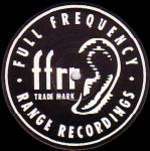Difference, The - Funny Walker - FFRR - Acid House
 |
SALE Price | £ |
Track ListingA Funny Walker (Spot On Remix)Remix - Seb Fontaine B1 Funny Walker (Tweeky & Fun-ky Remix) B2 Funny Walker (Da Techno Bohemian Remix) Remix - Da Techno Bohemian Media Condition » Mint (M) Sleeve Condition » Mint (M) |
| Artist | Difference, The | ||
| Title | Funny Walker | ||
| Label | FFRR | ||
| Catalogue | FXDJ 297 | ||
| Format | Vinyl 12 Inch | ||
| Released | 1997 | ||
| Genre | Acid House |
Other Titles by Difference, The
• Funny Walker • Funny Walker • Funny Walker (The Remixes) •
Information on the Acid House Genre
Origins in ChicagoThe first acid house records were produced in Chicago, Illinois. Phuture, a group founded by Nathan "DJ Pierre" Jones, Earl "Spanky" Smith Jr., and Herbert "Herb J" Jackson, is credited with having been the first to use the TB-303 in the house music context (the instrument appeared as early as 1983 in disco via Alexander Robotnick). The group's 12-minute "Acid Tracks" was recorded to tape and was played by DJ Ron Hardy at the Music Box, where Hardy was resident DJ. Hardy once played it four times over the course of an evening until the crowd responded favorably.
Chicago's house music scene was suffering from a massive crack down of parties and events by the police. Sales of house records were dwindling and by 1988, the genre was selling less than a tenth as many records as at the height of the style's popularity. However, house and especially acid house was beginning to experience a massive surge in popularity in Britain.
The London house-music scene
London's club Shoom opened in November 1987 and was one of the first clubs to introduce acid house to the clubbing public of England. It was opened by Danny Rampling and his wife. The club was extremely exclusive and featured thick fog, a dreamy atmosphere and acid house. This period began what some call the Second Summer of Love, a movement credited with a reduction in football hooliganism: instead of fights, football fans were listening to music, taking ecstasy, and joining the other club attendees in a peaceful movement often paralleled to the Summer of Love in San Francisco in the 1960s. However, the Second Summer of Love is generally considered much less politicized than its namesake, and is often seen as hedonistic and self-indulgent.
Another club called Trip was opened in June 1988 by Nick Holloway at the Astoria in London's West End. Trip was geared directly towards the acid house music scene. It was known for its intensity and stayed open until 3 AM. The patrons would spill into the streets chanting and drew the police on regular occasions. The reputation that occurrences like this created along with the UK's strong anti-club laws started to make it increasingly difficult to offer events in the conventional club atmosphere. Considered illegal in London during the late 80s, after-hour clubbing was against the law. However, this did not stop the club-goers from continuing after-hours dancing. Police would raid the after-hour parties, so the groups began to assemble inside warehouses and other inconspicuous venues in secret, hence also marking the first developments of the rave. Raves were well attended at this time and consisted of single events or moving series of parties thrown by production companies or unlicensed clubs. Two well-known groups at this point were Sunrise, who held particularly massive outdoor events, and Revolution in Progress (RIP), known for the dark atmosphere and hard music at events which were usually thrown in warehouses or at Clink Street, a South East London nightclub housed in a former jail.
The Sunrise group threw several large acid house raves in England which gathered serious press attention. In 1988 they threw "Burn It Up," 1989 brought "Early Summer Madness," "Midsummer Night's Dream," and "Back to the Future." They advertised huge sound systems, fairground rides, foreign DJs, and other attractions. Many articles were written sensationalizing these parties and the results of them, focusing especially on the drug use and out-of-control nature that the media perceived.
In September 1989, Sunrise held the largest Acid House rave ever, just outside Reigate in Surrey. In the fields adjacent to the school playing fields at Hartswood (between Woodhatch and Sidlow Bridge), the rave took place and lasted from 10pm on the Saturday night until late into Sunday night. It was estimated that nearly 20,000 attended during the weekend, and car queues stretched 4 miles, from the top of Reigate Hill to the Hartswood fields. It was widely covered by the press and television.
Data from the Discogs music database. Submit a Release.

